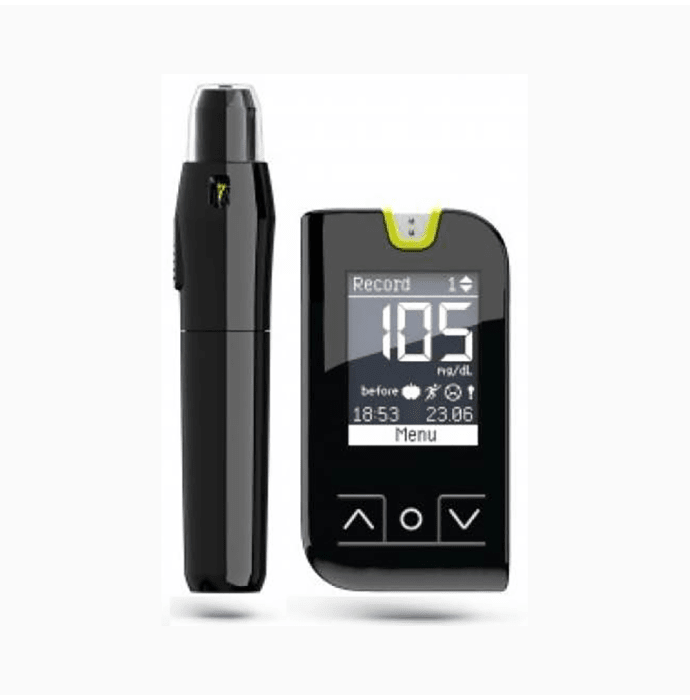Description of MyLife Unio Blood Glucose Monitor Glucometer with 10 Strips Free
MyLife Unio Blood Glucose Monitor with 10 Strips Free helps to monitor the blood glucose level. It helps in the management of diabetes and gives accurate results. The device is small, handy, and comes with an LED display.
Uses:
This glucometer helps to keep the blood sugar in check.
Product Specifications and Features:
- Gold electrode, which is a stable material for electric resistance to get accuracy
- MyLife unio blood glucose monitor has a modern design which is small and handy
- It is fast and provides accurate results
- Comes with a side-loading test strip for hygienic strip removal without blood contact
- The solid test strip design ensures good grip for easy handling
- An ultra-compact design for more discreetness
- Provides comfortable blood sampling with the automatic load and release function of Mylife autolance
- The monitor comes with four daily alarms, and the lancing device has seven variable puncture depths
Directions for Use:
Add a blood sample to the strip and get the result on display.
Safety Information:
- Read the label carefully before use
- Store in a cool and dry place, away from sunlight
- Keep out of reach of children
Quick Tips:
- For in-vitro diagnostic use only
- Do not take any medical decisions without consulting a doctor
- Always discuss the results with a registered medical practitioner
- Do wash the hands thoroughly with an antiseptic hand wash before the test
- Do not squeeze your finger when taking a blood drop sample
Frequently Asked Questions:
How do blood glucose monitors work?
Diabetes devices or glucometers test the amount of glucose in the blood. The test strips in glucometers contain an enzyme glucose oxidase, which reacts with glucose in the blood and sends the result as an electronic signal displayed on the monitor.
How often should you test your blood glucose levels?
In the case of type 1 diabetes, check the blood glucose levels several times a day, such as pre and post-meals and before and after exercise or as advised by the doctor. Whereas, in the case of type 2 diabetes, monitoring the sugar levels might be based on the severity of the condition, which can be several times a day, once a day, or thrice a week. Hence, talk to the doctor before testing.

